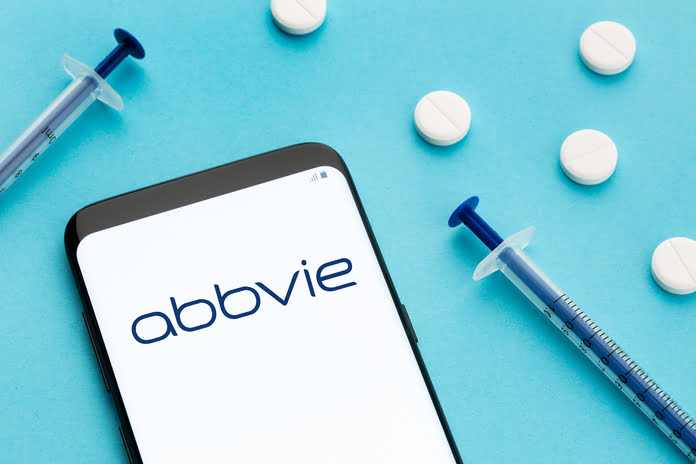Over the past few weeks, shares of AbbVie (NYSE:ABBV) have declined by about 20%. This is timed to the introduction of biosimilar versions of AbbVie’s well-known medication Humira. It makes little sense that the market is suddenly selling off Abbvie stock because that was a very well-known aspect for years. After this drop in the share price, the valuation has become more appealing once more, and the yield has increased to more than 4% as well.
Humira Drug’s Patent Expired
Over the past few years, Humira (adalimumab), an immunology treatment used to treat many conditions like rheumatoid arthritis, psoriasis, Crohn’s disease, and others, has been AbbVie’s top-selling medication and, in fact, the most popular medication in the entire globe.
Due to Humira’s enormous sales and the recent loss of patent protection in Europe, it is not surprising that other pharmaceutical companies have introduced biosimilars to the market. However, this did not cause sales to stop in Europe; despite a 46% drop in revenue the year after competitors entered the market with their respective biosimilars, Humira still brought in billions of dollars for AbbVie in the EU.
Since Humira’s patent expired in the United States this year, which was long known, the majority of investors will already be aware of this.
Nevertheless, ABBV’s share price fell over the past few weeks, falling 17% from the 52-week high and more than 10% thus far in 2023. This is somewhat unexpected given that an efficient market would have previously factored the patent expiration into AbbVie’s shares, especially given that the company recently released positive guidance for its next-generation Humira replacement drugs, upa and risa, also known as Rinvoq and Skyrizi. They generally target the same indications that Humira does, but due to their more advanced formulation, they should be more effective and have fewer adverse effects. Thus, it should come as no surprise that AbbVie has centered its future immunology growth strategy around these two products, which are expected to drive significant growth in the years to come.
But first, let’s return to Humira. In contrast to what many investors and experts appear to assume, I do think there is a fair likelihood that Humira’s revenue in 2023 and possibly the following few years will be higher. Despite the availability of biosimilars, what we have observed in the EU implies that revenues aren’t decreasing. There are a number of reasons for this, including the reluctance of some doctors to switch their patients to a different medication when Humira has stabilized their condition. Switching to a competitor’s product runs the risk of not treating the (severe) diseases that Humira is currently treating as effectively.
Even if costs may be higher than with a peer’s biosimilar product, some doctors and patients will choose to continue Humira therapies in order to decrease risks. Humira’s US revenue pullback has been projected by AbbVie’s management to be 45%, which would be slightly less than the EU’s pullback when the drug’s patent expired. Investors should know, however, that AbbVie has a history of under-promising and overdelivering — I thus wouldn’t be too surprised to see ABBV generate a better Humira sales performance in the US this year.
Humira’s sales will undoubtedly decrease this year, despite the fact that the reduction might not be as sharp as what the market now anticipates.
Fortunately, though, Humira is not AbbVie’s only source of income, and the company’s portfolio of medications is expanding significantly, so it is not entirely dependent on the drug. Because of this, the overall sales impact won’t be very significant:
According to analysts, AbbVie will bring in just over $54 billion in revenue this year, which would be a 6% decrease from the previous twelve months. All things considered, that’s not fantastic, but it’s also not terrible. Humira’s sales will probably continue to decline through 2024 and beyond, but AbbVie will be less negatively affected because revenues will be falling from a smaller base, causing less significant damage in absolute terms.
Because of this, analysts anticipate that sales will remain unchanged in 2024 compared to current projections for 2023. From there, AbbVie can resume growth in 2025 and beyond with the introduction of new medications as well as expansion from current assets that are still in the growth phase, such Skyrizi and Rinvoq. The longer-term future for ABBV has been seen favorably by management, as evidenced, for instance, by a recent presentation made in January at the JP Morgan Healthcare Conference:
A high-single-digit revenue growth rate in 2026–2029 would be fantastic, and “strong” revenue growth in 2025 seems hopeful. If that does occur, AbbVie’s revenue in 2029 may potentially reach $70 billion or more.
In fact, that would be feasible if sales increased by 5% a year from 2025 through 2029, from a projected $54 billion in 2024. Although it’s unclear exactly what AbbVie means when they say “strong,” it doesn’t sound like they’re referring to a 2025 sales increase in the low single digits. And a high-single-digit CAGR in the second half of the 2020s suggests that the 5% revenue growth in the aforementioned scenario is too pessimistic; as a result, a $70 billion estimate for revenues in 2029 may also be overly pessimistic; however, if everything proceeds as planned by management at this time, we may see $75 billion to $80 billion in revenue. In conclusion, even though 2023 will be a short-term setback, the growth story appears to be far from done.
Two of the growth catalysts will be Skyrizi and Rinvoq; management expects risk-adjusted sales of $18 billion or more in 2025, with sales expected to increase over the following years. The amount of money these two treatments will make in the future will depend on price increases, the number of patients who begin treatment for conditions for which they currently have approval, and new approvals for conditions for which they already have approval.
AbbVie’s oncology portfolio, which includes many assets that are now in phase III studies or prepared for phase III, in both hematology-oncology and solid tumors, is another growth driver. Additionally, AbbVie keeps growing its range of neuroscience products, including those used for acute migraine treatment and migraine prevention.
AbbVie’s continued debt reduction will also increase profits because it will cut down on future interest costs. Since the acquisition’s closing, AbbVie has already paid down $34 billion of the debt associated with Allergan, and more debt will be paid down in the future. Overall, it appears that AbbVie will operate pretty well in the 2020s, at least if all goes according to plan. It’s possible that certain pipeline assets won’t be authorized or that other companies may develop superior medications and steal market share from AbbVie. However, because AbbVie’s management has previously achieved or exceeded its own objectives and guidelines, I think there is a good likelihood that ABBV will meet its promises.
AbbVie Stock Price Decline, Valuation, Dividend
Following the recent share price decline, AbbVie is now attractively valued again. Based on expected earnings per share of $11.70 AbbVie is trading at 12.5x forward earnings right now, for an earnings yield of 8%.
Around half of those profits are paid out to shareholders via dividends — AbbVie currently offers a dividend yield of 4.1%. That means that the dividend is well-covered, with a coverage ratio of 1.97. When we consider AbbVie’s non-cyclical business model — patients require care, no matter how well the economy is doing — the dividend cut risk seems pretty low.
It is likely that dividend coverage will begin to increase in the next two years or so because 2023’s earnings will be the lowest, or very close to it (2024’s profits may be somewhat lower). The dividend will become much more secure as a result, and dividend growth will probably resume as well.
Since shares are currently trading 17% below the 52-week high and 9% above the 52-week low, they are not unappealing from a time standpoint.
The stock’s relative strength index (or “RSI”) has reached 31, indicating that it is currently in a relatively oversold state. Given the undemanding price, the attractive dividend yield, and the oversold condition of the shares, it may be a good idea to start or increase a position in AbbVie stock right now. The company is unquestionably a stronger investment right now than it was at its recent highs, given a greater starting yield and a lower valuation.
Featured Image: Megapixl © Avictorero















